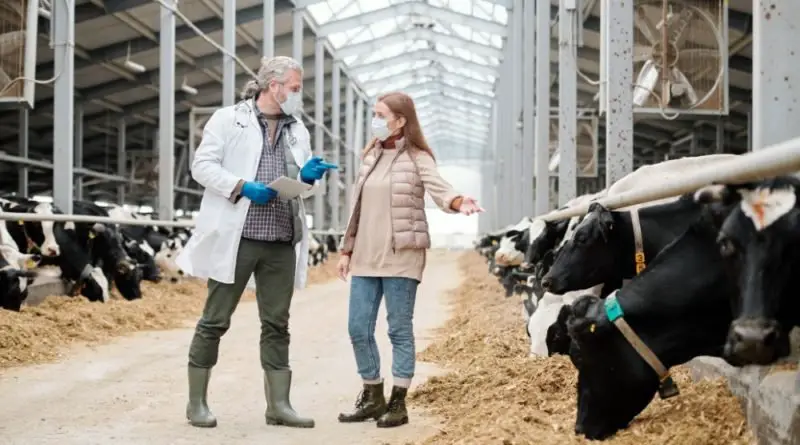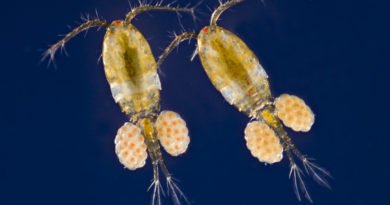Last modified on February 22nd, 2022 at 3:03 pm
How Enzymes Benefit the Animal Feed Industry
Enzymes are proteins that assist with the metabolic reactions in the body of humans as well as animals. Domesticated animals have what is called gut microflora which produces some enzymes but not all of the enzymes they need. This means that animals need certain industrial enzymes to help them with a variety of issues, such as growth and production and improved digestion. Enzyme supplementation can improve animal feed and in turn, improve the health of the animals which means there will be more meat delivered per animal at a much lower cost while still improving the health and well-being overall of the entire herd of each type of animal.
Things like veterinarian bills and higher death rates can be decreased by using enzyme supplements in animal feed. Enzymes come from a variety of different sources, including plants, other animals, and microorganisms. Industrial enzymes are used broadly by the farming industry as well as other industries, including brewing, dairy, biofuel, rubber, and paper industries. This helps industries better support their production while lowering their overall costs.
The vein enzymes that are used in animal feed include arabinoxylanases and beta glucanases since they break down the stringy areas of grains which in turn makes them easier for the animals to digest and allow them to have more uptake of indispensable supplements in their digestive tract. Enzyme innovation has even made it possible for the pig and poultry industries to extract nutrients from their feed very effectively which allows them to utilize the feed much more effectively and improve the animals’ general health and well-being.
What are Enzymes?
Enzymes are basically organic chemicals that facilitate faster chemical reactions. Enzymes are proteins that have very complex structures to them that allow them to stay very stable during the high temperatures that are required during the production of animal feed As well as when they are traveling through each animal’s gastrointestinal tract. Industrial enzymes have many significant qualities, but one of the main ones is the capacity to break down certain substrates in exact reaction sites. Each of the specific enzymes that are used in the processing of animal feed are chosen to target the distinct substrates that are used in that particular feed Since enzymes react a certain way under specific conditions. The process includes the amount of moisture content, the number of enzymes that are being used, the temperature that is needed during the process, and even the pH levels that are used must meet each of the protein’s particular reactive characteristics so that they work viably. In other words, under the best of conditions, a greater concentration of the enzyme will ensure a much quicker rate of reaction.
One example is in the dairy industry when rennin is used. Rennin is derived from the stomachs of young ruminant animals, such as calves and lambs, is used to manufacture cheese. For example, there are lipases are used during the process of making Roquefort cheese to enhance the ripening of the blue-mold cheese. Lactases are used to break down lactose to glucose and galactose.
The Effects of Enzymes on Animal Feed
There are many different types of enzymes that are used in animal feed. Read on for some examples and what the outcome is for the various types of enzymes.
Improved Digestive System and Reduced Intestinal Problems
It is difficult for piglets who have been winged from their mothers to utilize start which can slow down their developmental rates since they cannot completely process starch in maize or corn which is their main type of feed for them to eat each day. When industrial enzymes are added, the start is separated out within their small intestine which in turn allows them to have more healthy supplements entering their system. The enzymes help reduce intestinal problems in the piglets and provide them with improved digestion.
Boost in Nutritive Value
Many animals have trouble processing fiber so by adding enzymes to high fiber feed, it improves the benefits that each animal is receiving and helps alleviate digestive issues. This is especially important when it comes to poultry as well as pigs since they need the nutrients that come from things like barley meal, wheat, or rye but cannot digest it very well because of the fiber content. The enzymes help break down the fiber to allow them to be able to digest it properly which in turn, gives their feed a boost in nutritive value which will improve their overall health and well-being.
Improved nutrient utilization
Animals need plenty of protein to facilitate their growth and production that many of them have trouble being able to break down the protein in certain foods such as soybeans. Regular animal feed can actually prohibit the retention of supplements which can harm the digestive tract of the animals, so enzymes are used in the feed to allow for improved nutrient utilization in the animal since they will break down the protein to become amino acids and proteins.
Reducing Animal Waste
Phytic acid secures the amount of phosphorus in animal feed so farmers, ranchers, and breeders add phosphorus to the feed to ensure the pig and poultry are getting enough nutrition. The phytase enzyme added to the feed will allow the phosphorus from phytic acid to give the animal more phosphorus for their bodies but also reduces animal waste. The phosphorus that’s in the animal waste then filters into lakes and streams through groundwater which can then compromise the entire ecosystem in the area because it promotes the growth of algae which is harmful to plants and fish.
Growth and Production
The use of industrial enzymes when it comes to animal feed ultimately increases the growth and production of each animal since they have improved health overall. To ensure that quality enzymes are being used in animal feed, they need to be purchased from a reliable and trustworthy source such as American Bio Systems.




